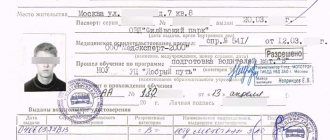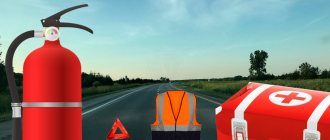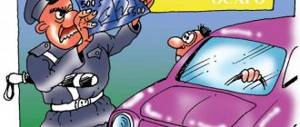This is true?
Not really. The corresponding resolution amending the traffic rules in 2021 was indeed issued. But the main thing is that, contrary to the data of many publications, it came into force not on March 12, but later.
The fact is that the last sentence in the resolution indicates the date of entry into force - exactly after 90 days from the date of the next day after the official publication. But the date of publication is not considered the date of issue of the resolution with amendments, but the date of official publication, as directly stated in the resolution. Official publication of government acts is carried out in government media. These include:
- Russian newspaper,
- Collection of legislation of the Russian Federation,
- Legal information portal.
[Updated 12/18/2017] The 90-day countdown began on December 18, 2017, when Resolution No. 1524 was officially published on the legal information portal. As a result, the 2021 changes to the traffic rules regarding reflective vests came into force on March 18, 2018.
You will also be interested in:
- New amendments to traffic rules in September 2021: what changes?
- New road signs and preliminary national standard
- Changes in traffic regulations in the summer of 2021: abolition of the Spikes sign and parking for the disabled in a new way
Is there a fine for passengers without a vest?
Passengers are not fined on the basis of Section 2 of the Traffic Regulations, because it applies to persons driving vehicles. However, section 4 of the Rules may apply to passengers - since when leaving the vehicle they formally become pedestrians.
The first paragraph of this section states that when on roads outside populated areas, pedestrians must have products with reflective elements that will be visible to drivers passing by vehicles.
Thus, a passenger without a “reflector” may be fined 500 rubles under Article 12.29 Part 1 of the Code of Administrative Offenses or may receive a warning.
Currently, amendments are being made to the law to ensure that a driver who leaves the vehicle can also be classified as a pedestrian. Then Article 12.27 can no longer apply to him.
What are they discussing?
According to news from most sites and Internet services, car drivers in the dark are required to wear reflective vests (with reflectors) when getting out of the car. This is all the information that is conveyed to drivers, who immediately run to buy such vests at auto stores, and it is definitely insufficient. And that's why!
When should a motorist wear reflective clothing in 2021?
Motorists must wear clothing with reflective details in the following cases:
- If they were forced to stop outside the city at night or late in the evening.
- If they were forced to stop the car outside the city, got out of it, and visibility was poor.
- If they had an accident on the highway when it was already dark.
- If they had an accident at night and there was poor visibility.
Poor visibility on the road is when other motorists cannot see the situation along the route ahead due to a certain terrain, plants, buildings, structures, including other cars. That is why a person should wear clothing with reflective elements not only at night, but also when there is clearly poor visibility on the road.
Important point! If at night or during limited visibility outside the city, an accident occurred with your participation, but you did not get out of the car, then you will be fined for not having a special vehicle. The inspector cannot legally issue you a vest.
How is it really?
Let's first show how strictly according to traffic rules you now need to wear reflective vests, in the form of interactive questions about the conditions.
Do I need to wear a vest? Online test
Have you been in an accident or had to make a forced stop?
Not really
Is it dark, foggy or raining with insufficient road visibility?
Not really
Have you gotten out of your car and are on the roadway or side of the road?
Not really
You do not need to wear a reflective vest. But be sure to buy it and take it with you in case such a responsibility arises. Go through again
You do not need to wear a reflective vest according to traffic regulations, but it is advisable to do so so that other drivers can see you if there is a danger of being hit by a car. Also, be sure to buy it and take it with you in case such a responsibility arises. Go through again
You are required to wear a reflective vest or cape jacket with reflective stripes in accordance with GOST 12.4.281-2014 (with a stripe width of at least 50 mm), as in the figure below.
Read more…
Go through again
In short, not every time you get out of the car, not everywhere, not only in the dark, and not just reflective vests. But let's go into more detail!
Here is the official interpretation of the new paragraph 2.3.4 of the 2021 traffic rules:
2.3. The driver of the vehicle is obliged: .... 2.3.4. In the event of a forced stop of a vehicle or a traffic accident outside populated areas in the dark or in conditions of limited visibility while on the roadway or side of the road, be dressed in a jacket, vest or cape vest with stripes of reflective material that meet the requirements of GOST 12.4. 281-2014.
What?
A jacket or vest-cape with stripes of reflective material that comply with the specified GOST. It makes no sense to disassemble all this GOST, but since a vest or jacket must be in accordance with this GOST, we will present the main subtleties:
- the width of the reflective strip must be at least 50 mm (clause 4.2.2 of GOST);
- both the vest and the jacket must have 2 (no more and no less) such reflective stripes located horizontally on the torso; the bottom strip should be located at a distance of at least 50 mm from the bottom of the product, and the top strip should be at least 50 mm from the bottom (clause 4.2.3 of GOST);
- two more reflective stripes should each go from the upper horizontal stripe in front and further to the top, then over the shoulders to the back and to the same horizontal stripe at the back - on both sides (on both shoulders) (clause 4.2.3 of GOST).
But one horizontal stripe is also allowed (clause 4.2.3 of GOST, clause c).
This is what a correct reflective vest looks like according to GOST:
And this is incorrect (although one horizontal stripe is allowed, but 2 stripes should still go across the shoulders):
Where?
As can be seen from the official interpretation of the change in traffic rules, the driver must wear a reflective vest only outside populated areas and only when on the roadway or on the side of the road.
When?
And not only in the dark, but also on parts of the road with limited visibility. This is defined in the traffic rules:
“Limited visibility” is the driver’s visibility of the road in the direction of travel, limited by the terrain, geometric parameters of the road, vegetation, buildings, structures or other objects, including vehicles.
At what distance visibility should be limited is not specified.
Under what conditions?
If the driver got into an accident or made a forced stop and got out of the car. The latter, as we remember from the Rules, is a stop associated with a breakdown or danger, deteriorating condition of the driver or an obstacle on the route of the car.
Vest requirements
The parameters of signal clothing and patterns made of reflective fabric are determined in detail by GOST 12.4.281-2014:
- it should be a vest, vest-shaped cape or jacket;
- with stripes running horizontally along the torso, 5 cm wide, and 3 cm wide along the shoulders;
- Option 1: two stripes cover the torso horizontally with an interval of 5 cm, with the lower one located no closer than 5 cm from the bottom edge of the vest or jacket;
- Option 2: 1 horizontal stripe at a distance of 5 cm from the edge and two vertical stripes that connect the horizontal stripe and pass through the shoulders in parallel or crosswise on the back;
- Option 3 - two horizontal and two shoulder stripes;
- if it is a jacket or cape, the sleeves should have covering horizontal stripes at a distance of 5 cm from the edge, preferably at the level of the stripes on the torso;
- if it is a cape, the gap between the parts on the sides should not exceed 5 cm;
- The background color of the signal clothing is fluorescent yellow, orange or red.
The standard does not clearly indicate the material from which clothing can be made, only its characteristics of wear, flexibility, etc. It is possible to purchase vests from cotton, raincoat or denim fabric.
Signaling clothing is marked. The material or tag must have a GOST number and a pictogram indicating the classes of the product and reflective fabric.
Is there any point in reflective vests?
In this context, it makes no difference whether you are a driver or a pedestrian. Reflective vests certainly significantly improve your visibility on the road in the dark. But how much? We have prepared the answer to this question in an infographic based on statistical research and GOST standards:
A person in a reflective vest can be seen 6 times further on the road than in dark clothes. But most importantly, the vest allows you to be seen before the driver needs to resort to emergency braking.
What kind of fabric is used for sewing signal vests?
The signal reflective vest (GOST 12.4.218-2014) must meet certain brightness parameters. Here are the indicators characteristic of fluorescent fabric of different colors:
- Yellow – 0.76 cd/sq.m.
- Orange – 0.4 cd/sq.m.
- Red – 0.25 cd/sq.m.
It is desirable that the brightness coefficient slightly exceeds the minimum values indicated above
GOST requirements for a reflective vest indicate that the material used for sewing sleeveless vests must not only be very bright, but also very resistant to factors such as:
- Ultraviolet.
- Sunlight.
- Friction.
- Precipitation in the form of rain and snow.
- Sweating.
- Wash or dry clean.
The vest material must withstand significant vertical and horizontal tensile loads
I know the traffic rules well, and there’s still something wrong here!
That's right. If you began to suspect a discrepancy between the official text of Resolution No. 1524 and the actual wording in the traffic rules, then let’s draw the line here.
The driver is inside the car. This follows from the definition of the driver in paragraph 1.2 of the traffic rules. Once he gets out of the car, he is no longer the driver. But the new traffic rules clause 2.3.4 still applies to drivers, since it is located in the driver’s responsibilities.
That is, if the driver got out of the car, he may not comply with this clause at all, which is being amended in 2021, because, according to another clause 1.3, every road user is obliged to know and follow the rules that only apply to them, and he must comply with the duties of a pedestrian .
But there is also a condition regarding reflective objects among pedestrians - it is spelled out in 4.1 of the Traffic Regulations, is advisory in nature and recommends that pedestrians carry any reflective objects with them at night on country roads.
Meanwhile, in practice, most likely, you will have to prove such a discrepancy by the sweat of your brow, and the traffic police officer in many cases will consider this a violation of the new paragraph 2.3.4 of the traffic rules.
Something else useful for you:
- Is the new law on retaking traffic rules when replacing a license true?
- Is it possible or not to park cars in the courtyard of houses under the new law?
- Is it true or not that the fine for drunk driving will increase in 2021?
Some clarifications of the new traffic rules regarding signal vests
Despite the traffic rules requirements described above, it is not always necessary to have a reflective vest (GOST 12.4.218.2014) with you in the car. After all, the new amendments apply only to motorists leaving the city limits.
In addition, even on a suburban highway, the traffic inspector will not have the right to issue you a fine for not wearing a signal vest if you remain in the car during the conversation. Violation of traffic rules is recorded only when the driver is on the highway outside the car without reflective protection.
In some cases, subject to visibility up to 130 meters, a jacket equipped with reflective inserts can be used as protective clothing.
Does the inspector have the right to check the presence of a reflective vest?
No. As we have already indicated above, the driver has no obligation to hand over a reflective vest for inspection. Moreover, there is no obligation to carry it with you. The traffic rules clearly state the obligation to wear it under certain conditions. But there is no direct obligation to always have it with you. How you fulfill this duty if there is no vest in the car is not the business of the traffic police inspector. Maybe you can buy it at exorbitant prices from passing drivers!
Thus, the traffic police officer does not have the authority to check the presence of a vest or cape. Here everything is even simpler than with a first aid kit, fire extinguisher and AO sign - you are required to have the latter in your car, according to the Basic Provisions of the Rules. You don’t even need to carry a vest with you, according to the letter of the by-law.
However, inspectors in practice try to fine drivers for not having a vest in their car, requiring them to show it. The traffic police, however, officially clarified that employees do not have the right to do this, and also confirmed that there is no fine for not wearing a vest.
Should you always carry a vest in your car?
No, the driver has no such obligation. If the car is used only in populated areas, it is not necessary to purchase a vest.
However, unlike the “Spikes” sign, such a vest directly affects your personal safety.
A forced stop is already not a pleasant event, but this does not mean that the troubles are all over. And a little trouble can turn into a tragedy.
According to the legislator, in the first half of 2021, the number of collisions with drivers during road accidents in the dark increased by 4.8%.
How does a vest affect a person's visibility?
What is the penalty for not having a reflective vest?
There is no fine. Moreover, it is not available both for the driver for violating 2.3.4 in 2021, and for the pedestrian for violating 4.1 of the traffic rules.
However, this does not prevent traffic police officers from issuing fines in 2021, replacing articles. Here is an example of such a traffic police fine for the absence of a reflective vest on a participant in an accident:
Please note that this decree was issued to the driver as a result of an accident, who is represented as a pedestrian in the eyes of the inspector.
Will you be fined for not wearing a vest in 2020?
For motorists, the changes in traffic regulations, which made wearing a vest mandatory, came as a surprise. But will drivers be fined for not wearing a reflective hood? Let's figure it out.
The added traffic rule obliges the driver to use vests with reflective fabric when leaving the car outside the city at night or when visibility on the road or side of the road is poor.
At the same time, the Code of Administrative Offenses does not provide for punishment for violation of paragraph 2.3.4. According to clarifications received from the traffic police, car owners have not yet been fined for not wearing a vest . The issue of fining drivers under clause 12.27 of the Code of Administrative Offenses “Failure to comply with instructions to the driver in a traffic accident” is being considered; the fine will be 1,000 rubles. Such a fine will be issued if, during an accident outside the city, the car owner displays a warning triangle without wearing a vest. But if you decide to just warm up after a long journey by stopping on the side of the road and don’t put on a signal cape, the traffic cops won’t issue you a fine.
IMPORTANT: When stopped by the traffic police, employees do not have the right to demand the provision of special clothing and issue a fine in the absence, since the rules only require the USE of it in specified cases, but there are no requirements for the presence and transportation
Why then spend money if you don’t get fined? The purpose of the law is not always to punish violators, as in the case of a cape with stripes of reflective material. If you look at it, the law protects conscientious drivers. If you hit a person on the road in insufficient visibility, the lack of special clothing will serve as a mitigating circumstance in court. Pedestrians and car owners who neglect means of increasing visibility in the dark risk their lives.
Reflective material makes objects on the road visible from high distances. The price of a cape in stores does not exceed 200-300 rubles; you must agree, this is not a reason to risk your life.
What kind of reflective clothing should be according to GOST
In the understanding of the traffic police service, a vest, cape, or jacket can be used as reflective clothing, which is suitable in all respects under GOST 12.4.281-2014, namely:
- The clothing has 1 or 2 reflective stripes that go around the torso and the gap between them is 55 mm.
- The garment features reflective material that connects to the top stripe at the front of the torso and across the shoulders at the back.
- The lower edge of the bottom strip is located in the torso area with a gap of 55 mm from the very bottom of the clothing.
If a person is wearing a reflective jacket or vest, but it does not comply with GOST standards, then the traffic police inspector will equate this to the complete absence of special clothing, and he will have the right to issue a fine.
Classification of reflective vests
According to GOST 12.4.218 2014, the high visibility reflective vest is divided into three categories. The degree of protection is determined by the area of the warning signs in the form of stripes. Signaling equipment is made from brightly colored materials, while vests can be either only fabric, or supplemented with elements that reflect light.
The table shows the minimum area of reflective strips in square meters:
| Fabric characteristics | Class III vests | Class II vest | Class I vests |
| Background | 0,8 | 0,5 | 0,14 |
| Retroreflective | 0,2 | 0,13 | 0,1 |
| Combined | — | — | 0,2 |
According to statistics, class II signal equipment is the most popular, since it is very clearly visible both day and night
Traffic rules on reflective vests for motorists
Resolution of the Government of the Russian Federation number 1524 was published in the Russian press on December 20, 2021 and came into force on March 18, 2018. It was from this day on that the absence of a reflective vest in a car was considered an offense. The initiator of this innovation was the traffic police.
The State Traffic Safety Inspectorate of the Russian Federation has a special analytical department that monitors the situation on Russian roads. Its tasks include tracking the main causes leading to road accidents, especially those involving loss of life. Department employees compare the current state of affairs with what could have been observed a year or several years ago. Their task is to develop recommendations not only for their colleagues from the road inspection, but also for Russian legislators.
Russian lawmakers passed a law on reflective vests for drivers in December 2021
Russian legislators have obligated drivers to wear signal clothing when stopping outside populated areas in the dark. They claim that the reason was the horrific traffic police statistics. In the first half of last year alone, 68 people died under the wheels of cars in Russia while they were repairing their cars in the dark near the road. These people died because they were invisible to other drivers. In addition, statistics on road accidents based on the results of the first half of 2021 indicated an increase in the number of such incidents by almost 10%. These percentages are just numbers, but there are human lives behind them.
Let us note that since 2015, Russian pedestrians must wear reflective clothing or reflective elements on it in the dark. After the introduction of this standard, the number of fatal collisions with pedestrians decreased by 12%. And a driver who is forced to stop on the side of the road in the dark is in many ways similar to a pedestrian and in the same way can find himself under the wheels of a flying car.
Outside populated areas, road lighting is minimal. The driver has a lot of worries: he needs to avoid being blinded by the headlights of oncoming cars, avoid potholes on the road, in the end, he is just tired. And these factors often prevent him from seeing in time a person who is standing or walking along the side of the road. It is for these reasons that collisions with fatalities or serious injuries most often occur.
How are things going in other countries?
Today, the Russian Federation is far from the only country in the world that has introduced such a norm at the legislative level. Most European countries have long required their drivers to carry, and wear, under appropriate circumstances, clothing with reflective elements. In some countries, this rule is considered simply a recommendation and no penalties are provided for non-compliance. In most European countries, if a driver does not have a reflective vest or jacket, a fine of several hundred euros is imposed.
Abroad, reflective clothing has long become the norm on the roads.
For the first time, people started talking about reflective vests for drivers in the United States of America in the mid-sixties of the last century. It was then that such vests were invented. Ten years later, this became the legal norm for the United States. Some European states require drivers who have exited their vehicles to wear reflective vests, even during the day.
Russians who managed, for example, to drive in Europe, quite calmly accepted the norm adopted by their Government in December 2021. The least tolerant in this regard are drivers of remote Russian regions, who believe that in their area and with the intensity of road traffic, the presence of reflective clothing is simply impractical and no one will comply with this norm. The majority of car owners and drivers in Russian megacities did not react to the innovation at all.
Fine for being near a car at night outside the city
It is not the absence of a reflective vest in the car that is considered a violation of traffic rules, but the fact that the driver is without it on the road or side of the road in the dark outside the city. However, no special provision on liability has been included in the Code of Administrative Offences. But this may not always save the driver from punishment. Legislative inaccuracies have already allowed traffic police officers to impose fines under other articles of the Code of Administrative Offenses of the Russian Federation.
For example, on the websites of some regional State Traffic Inspectorates (for example, the Tula region) a warning appeared that being outside the vehicle actually turns the driver into a pedestrian. And the latter, according to clause 4.1 of the traffic rules, are required to carry reflective elements outside of cities and villages and ensure their visibility to traffic participants. Failure to comply may result in liability - a verbal reprimand or a fine of 500 rubles. according to Art. 12.29 Code of Administrative Offences, part 1.
Such punishment for a vehicle passenger who gets out of the car is quite legal. However, the Appeal Board of the RF Armed Forces found that the driver is obliged to comply with traffic rules even outside his vehicle. This is stated in Determination No. APL18-387 dated October 22, 2018. Once out of the car, the driver still remains a driver. And the fine under Art. 12.29 Part 1 of the Code of Administrative Offenses of the Russian Federation is provided only for passengers and pedestrians.
Driving without a vest in a car can result in a fine under Art. 12.27 Code of Administrative Offences, part 1, if the driver gets into an accident at night outside the city. Traffic regulations dictate the course of action for those involved in an accident. You need to stop, turn on the hazard lights, mark the scene with a sign, help the wounded, etc.
New paragraph 2.3.4 actually adds wearing reflective clothing to the list. For non-compliance, a fine of 1000 rubles is provided. It is quite difficult to challenge a claim.
What awaits violators?
The driver of a vehicle who does not have a reflective product may be charged by the State Traffic Inspectorate with several articles of the Administrative Code, the choice of which is determined by the circumstances of the case:
- There is no vest in the vehicle, but the situation provided for in Section 2, Clause 3.4 of the Traffic Regulations has not arisen - there is no penalty for this.
- If you stop outside the city in conditions that impede visibility, and the driver who left the vehicle is not wearing a vest, you will have to pay 500 rubles to the budget or receive a warning (Part 1 of Article 12.29 of the Administrative Code).
- An accident involving a vehicle occurred on a country road in conditions of limited visibility, the driver was not wearing a vest - under Article 12.27 of the Administrative Code, Part 1, he will be fined 1,000 rubles.
Part 1.3 of Article 32.2 of the Code of Administrative Offenses allows you to pay fines under Articles 12.27 and 12.29 within a 20-day period with a 50% discount. In this case, the fine will be 500 and 250 rubles.











